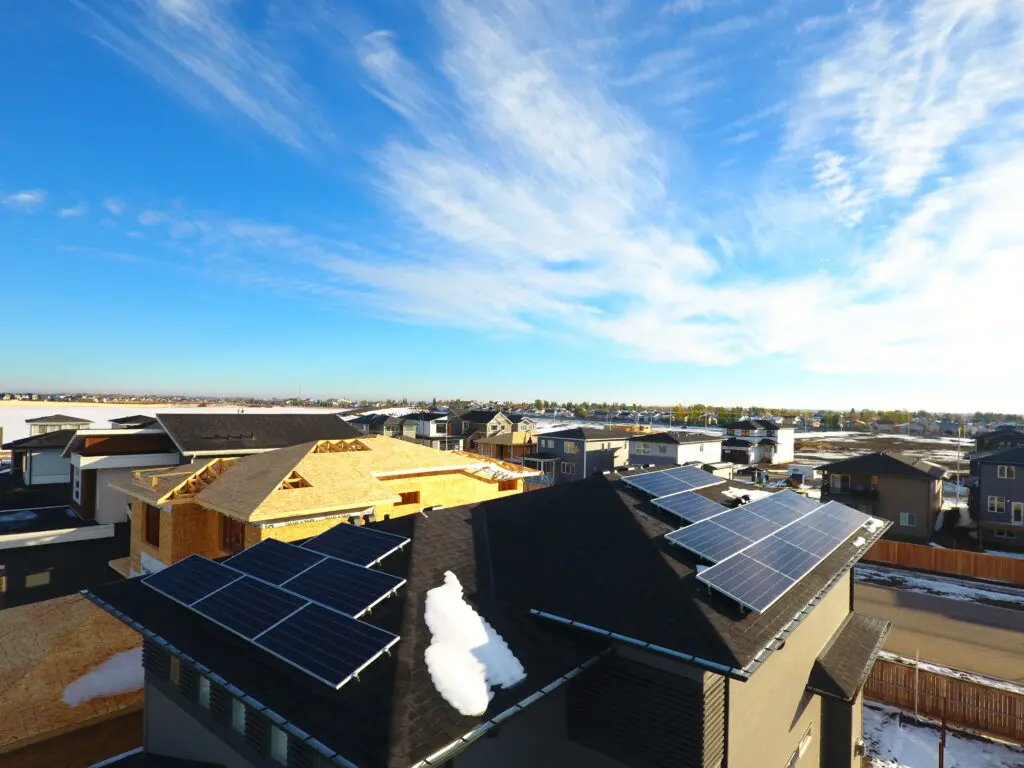The strong economic case for putting wind energy, solar energy and energy storage at the centre of Canada’s energy transition.
In a previous blog, I argued that today’s low-cost wind and solar energy, coupled with existing hydropower and increasingly economical energy-storage options, represent the most affordable and best path forward for Canada’s electricity future.
Here, I explore another facet of the economic argument: that affordable, clean and reliable power not only provides the lowest-cost pathway to meeting our climate-change goals, but also offers many other important economic benefits for Canadians.
Putting wind energy, solar energy and energy storage at the centre of Canada’s energy transition will benefit Canada economically in many ways: significant new local investment and job creation, and direct benefits to homeowners, small businesses and host communities in rural and remote areas of Canada, including Indigenous communities.
Investment
Renewables and energy storage represent the foundation of the energy transition required to move Canada to net-zero greenhouse gas emissions by 2050.
On a global scale, Bloomberg New Energy Finance projects that, between now and 2050, 80 percent of all investment in new power-generating capacity will go to wind, solar and batteries. This represents $12 trillion in new investment.
With its abundant, untapped and high-quality solar and wind resources, Canada should strive to position itself as a competitive destination for such investment.
Every 100 MW of new wind-energy capacity represents approximately $180 million in total investment, while every 100 MW of new solar-energy capacity represents $112M. These investments bring significant benefits to local communities throughout the life cycle of the project.
Job creation
This new investment in wind energy, solar energy and energy storage will also create significant employment opportunities in Canada.
It is already happening around the world. According to the International Renewable Energy Agency (IRENA), approximately 5 million people were employed in the wind energy and solar photovoltaic (PV) industries in 2019, up from just over 2 million people in 2012. There is rapid growth in these industries, and it is accelerating at a rapid pace worldwide.
Investments in solar, wind and energy storage create employment opportunities throughout the project life cycle: development, construction, operations and decommissioning. Additional jobs are created through the manufacture of these technologies and their key components.

When one considers the rapid projected expansion of wind and solar energy, the opportunities for job growth are significant. Indeed, the United States has already reported that wind turbine and solar technicians are the fastest growing jobs in the country.
Benefits for individuals and communities
New utility-scale solar- and wind-energy development provides lease income to local landowners and municipal tax revenues for host communities, along with a diverse range of benefits that contribute to the priority needs of the community, as per agreements with project developers.
For example, an Alberta supply-chain study found that 100 MW of wind provides approximately $1 million in annual property taxes for host communities and approximately $500,000 in royalty payments to landowners.
These are important economic benefits for the rural communities that host utility-scale wind-energy and solar-energy projects. Many of these host communities are found in rural areas with a limited industrial base. Revenues from this type of renewable energy development provide increased stability for economies that often rely on variable revenues from activities like agriculture, forestry and fisheries.

What’s more, rooftop solar PV installations bring direct economic benefits to homeowners, businesses and community organizations, helping to reduce energy costs and increasing the economic value of the building.
Benefits for indigenous communities
Increasingly, indigenous communities across Canada are seeking opportunities to benefit from wind- and solar-energy development; project proponents, along with government policy, are responding to this interest.
According to Indigenous Clean Energy, 197 of Canada’s medium-to-large renewable-energy projects (more than one third of them solar or wind) are fully or partially owned by indigenous people and benefit from indigenous involvement, while approximately 2,000 small renewable-energy systems have Indigenous leadership and partnerships in place. These numbers are poised to grow significantly over the next few years.
The role of storage
Energy storage is at an earlier stage of deployment than wind and solar energy in Canada, but it already promises strong economic benefits.
Energy storage is proving to be the Swiss Army Knife of the energy transition because of the multiple services that storage can provide. These include grid reliability services, decreases in costly outages, and a reduction in system costs, by enabling the more efficient use of reliable and affordable wind and solar energy resources.
Already, many renewable energy companies and utilities are including storage in their development and planning activities: this activity is expected to accelerate as the costs of storage continue their rapid decline.

Returns on renewables
Canada needs to significantly increase its development of wind energy, solar energy and energy storage if it is to have any hope of getting to net-zero greenhouse gas emissions by 2050. Just as importantly, Canadians—and the communities in which they live—need to capture the strong and significant economic benefits associated with maximizing the development of these renewable energy technologies. These benefits will continue to give back for generations to come.
In my next blog on CanREA’s vision, I will explore why wind energy, solar energy and energy storage are critical in our efforts to combat climate change.
For more data on solar energy, wind energy and energy storage in Canada, please see our By the Numbers page.





